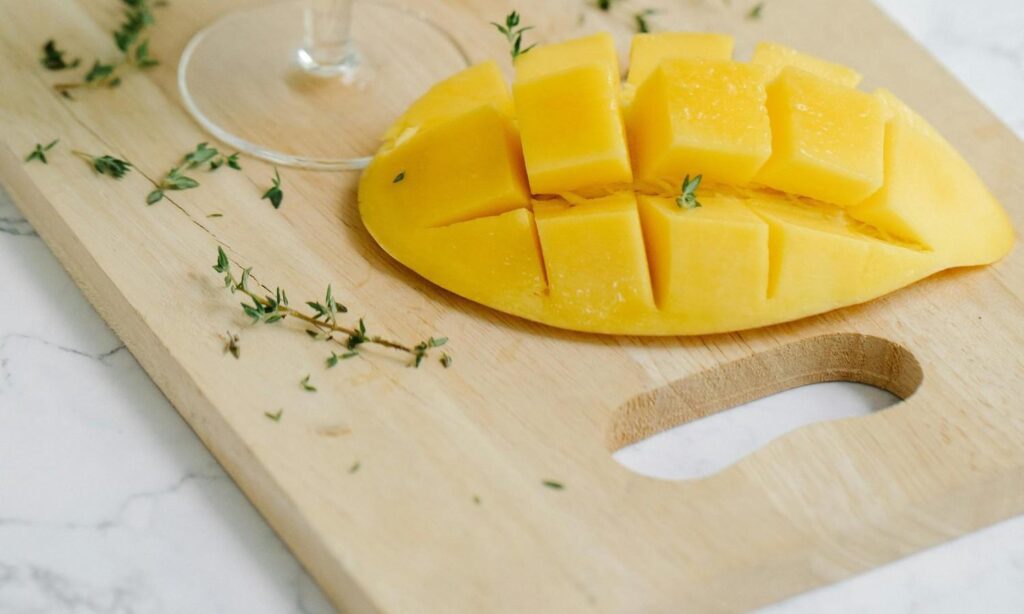When I was a kid, summer meant one thing: the moment my dad would walk through the door with a crate of mangoes, their sweet, resinous scent filling the house before he even set them down. My siblings and I would crowd around, impatient, as he sliced one open, revealing that golden, juicy flesh. That memory hits me every July 22, National Mango Day, when the country pauses to celebrate this tropical superstar. But here’s the kicker: mangoes aren’t just a nostalgic treat anymore—they’re quietly stealing the crown as America’s favorite summer fruit. So, what’s driving this mango mania? Let’s peel back the layers and find out.
The Mango’s Meteoric Rise in America
Mangoes have been around forever—over 5,000 years, if you trace their roots back to India, where they were first cultivated. But their journey to American hearts is a newer story. According to the National Mango Board, U.S. mango consumption has skyrocketed, jumping from 1.88 pounds per person in 2005 to 3.42 pounds in 2017—a whopping 82% increase. And that trend hasn’t slowed. Why? It’s not just the taste (though, let’s be honest, that sweet-tangy explosion is hard to beat). Mangoes are riding a wave of cultural shifts, nutritional awareness, and clever marketing that’s making them the fruit to beat in summer.
- Cultural Fusion: America’s growing diversity, especially from Latin American, Caribbean, and South Asian communities, has brought mangoes into the mainstream. From mango lassi at Indian restaurants to mango salsa on food trucks, the fruit feels both exotic and familiar.
- Health Halo: Mangoes are packed with over 20 vitamins and minerals, including 50% of your daily vitamin C in just 3/4 cup, according to Mango.org. They’re low in calories (about 70 per serving) and high in fiber, making them a darling of health-conscious eaters.
- Year-Round Appeal: Unlike strawberries or peaches, mangoes are available almost all year thanks to imports from countries like Mexico, Peru, and Brazil. Summer, though, is when they shine brightest, with varieties like Tommy Atkins and Haden hitting peak ripeness.
But there’s more to this story than numbers and nutrients. Mangoes are weaving themselves into the fabric of American summers through festivals, recipes, and even social media trends. Let’s dive deeper.
A Fruit Steeped in History and Symbolism
Mangoes aren’t just food—they’re culture. In India, where they’re the national fruit, a basket of mangoes is a gesture of friendship, a symbol of love, and even a nod to prosperity. Legend has it that Buddha meditated under a mango tree, and the fruit’s teardrop shape inspired the paisley pattern. When Portuguese traders brought mangoes to the Americas in the 16th century, they didn’t just carry a fruit—they carried a story. By the 1800s, Spanish explorers had planted mango trees in Florida, and today, states like Florida, California, and Hawaii grow their own, though most U.S. mangoes are imported from Latin America.
This rich history resonates with Americans today, especially as multicultural influences shape our food scene. “Mangoes are a bridge between cultures,” says Jessica Bohlman of the National Mango Board. “They’re as at home in a Miami backyard as they are in a Mumbai market.” That versatility—both in flavor and cultural significance—is part of why mangoes feel so right for summer, a season of backyard barbecues and global-inspired potlucks.
Why Mangoes Are Summer’s MVP
Summer is the season of indulgence—ice cream, burgers, and, increasingly, mangoes. Their vibrant color and juicy texture scream warm weather, but there’s a science to their summer dominance. Mangoes thrive in tropical climates, and their peak harvest in the U.S. (June and July) aligns perfectly with our craving for refreshing, hydrating foods. Here’s why they’re stealing the spotlight:
- Flavor Explosion: Mangoes combine the sweetness of peaches, the tang of pineapples, and a hint of citrus. “There are mangoes that taste like coconut, honey, even pumpkin pie,” says Alexander Salazar, a Florida mango grower. This diversity makes them endlessly versatile, from smoothies to salsas.
- Social Media Buzz: Scroll through Instagram, and you’ll see mangoes everywhere—sliced into perfect cubes, blended into neon-yellow smoothies, or even grilled alongside ribs. The hashtag #NationalMangoDay trends every July 22, with foodies sharing recipes and photos that make your mouth water.
- Festivals and Fun: From Florida’s mango festivals to the International Mango Festival in Delhi (which inspires U.S. events), summer is mango celebration season. These events showcase varieties like Keitt and Kent, educate consumers on mango prep, and even offer tastings that turn skeptics into fans.
I remember stumbling across a mango festival in Miami a few years ago. The air was thick with the smell of ripe fruit, and vendors were handing out samples of mango chutney, mango sorbet, even mango-infused cocktails. Kids were running around with sticky fingers, and I couldn’t help but grin at how this fruit turned strangers into a community. That’s the magic of mangoes—they bring people together.
The Nutritional Edge: Why Health Nuts Love Mangoes
Let’s talk about why mangoes aren’t just tasty but downright good for you. According to dietitian Jessica Higgins, “The natural sugar in mangoes doesn’t spike your blood glucose the way added sugars do, thanks to the fiber.” One half of a mango has about 10% of your daily fiber needs, which supports gut health and keeps cholesterol in check. Plus, it’s loaded with potassium (282 mg per half), which helps balance sodium levels and lowers blood pressure risks.
Here’s a quick breakdown of what makes mangoes a nutritional powerhouse:
- Vitamin C: 61 mg per half, rivaling oranges and boosting immunity and iron absorption.
- Antioxidants: Rich in polyphenols, mangoes fight inflammation and may even aid in cancer prevention, per research from Britannica.
- Low Calorie, High Satisfaction: At 70 calories per 3/4 cup, mangoes satisfy sweet cravings without the guilt of a candy bar.
“Mangoes are a nutrient-dense way to enjoy summer,” says Stephanie Rogus, a nutrition specialist at Texas A&M University. “They’re not just a treat—they’re a tool for better health.” That’s a big reason why fitness influencers and wellness blogs can’t stop raving about them.
Mangoes in the Kitchen: From Smoothies to Salsas
If you’ve ever sliced a mango and ended up with a slippery mess, you’re not alone. But mastering the “hedgehog” cut (scoring the flesh into a grid and flipping it inside out) opens up a world of culinary possibilities. Mangoes are insanely versatile, and Americans are catching on. Here are some ways they’re showing up in summer kitchens:
- Smoothies and Drinks: Blend mango with yogurt and a splash of lime for a tropical smoothie, or try aam panna, a South Asian drink made with green mangoes, sugar, and spices.
- Savory Dishes: Mango salsa with jal担忧, jalapeños, and cilantro is a summer staple, perfect with grilled fish or chicken. Check out this recipe from BBC Good Food for inspiration.
- Desserts: Mango sorbet or chia seed pudding (like this recipe from Eat REAL America) adds a tropical twist to summer sweets.
- Grilled Goodies: Grilled mango slices pair beautifully with BBQ ribs or shrimp, adding a sweet-smoky contrast.
I once tried making mango lassi at home, inspired by a local Indian restaurant. It was just mango, yogurt, cardamom, and a touch of honey, but it felt like a vacation in a glass. That’s the thing about mangoes—they elevate even the simplest recipes into something special.
The Challenges: Allergies, Availability, and Ripening
Mangoes aren’t perfect. Their sap, leaves, and skin can cause allergic reactions in some people, especially during harvest season. “Contact with mango sap can lead to dermatitis,” warns Jeff Wasielewski, a tropical fruit expert. If you’re sensitive, stick to pre-cut mangoes or wear gloves while prepping.
Availability is another hurdle. While imports make mangoes accessible year-round, their peak quality in the U.S. hits in summer, when varieties like Honey and Francis are at their best. To pick a ripe one, press gently—it should give slightly and smell sweet near the stem. If it’s not ready, pop it in a paper bag with a banana to speed things up.
The Future of Mangoes in America
So, why are mangoes becoming America’s summer obsession? It’s a perfect storm of flavor, health benefits, cultural resonance, and social media hype. They’re not just a fruit—they’re a vibe, a symbol of summer’s joy and abundance. As our palates grow more adventurous and our population more diverse, mangoes are poised to dethrone traditional summer fruits like watermelon or peaches.
But there’s a catch. With great popularity comes responsibility. Overreliance on imports raises questions about sustainability, and climate change could affect mango-growing regions. Experts like Dr. Jonathan Crane, a tropical fruit specialist, suggest supporting local growers in Florida and California to reduce carbon footprints. “Mangoes are a global fruit, but local production can make a difference,” he says.
A Sweet Reflection
As National Mango Day rolls around this July 22, I’m planning to celebrate with a mango salad—maybe some diced Keitt with arugula, feta, and a honey-lime dressing. It’s a small way to honor a fruit that’s more than just a snack—it’s a connector of cultures, a burst of summer joy, and a reminder to savor life’s sweet moments. What’s your favorite way to enjoy mangoes? Try something new this year—maybe a mango pickle inspired by Indian cuisine or a grilled mango dessert. Whatever you choose, let this fruit remind you that summer is about more than heat—it’s about connection, flavor, and a little bit of magic.










